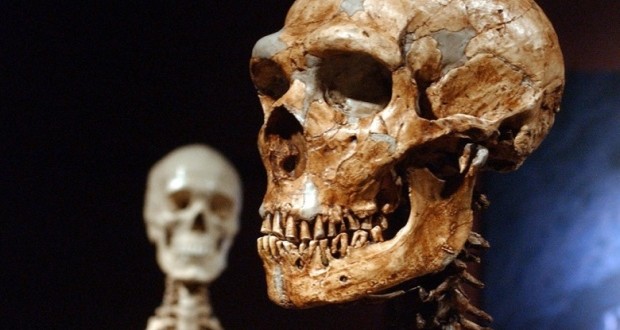Neanderthals and modern humans were interbreeding much earlier than was previously thought, scientists say.
Traces of human DNA found in a Neanderthal genome suggest that we started mixing with our now-extinct relatives 100,000 years ago.
Antonio Rosas from the Spanish Natural Science Museum said: “Over 100,000 years ago, anatomically modern humans ventured out of Africa for the first time. These modern humans met and interbred with a group of Neanderthals, which later may have moved to the south of modern day Siberia, carrying the genes of H. sapiens.”
The study relied on analysis of the genomes of a Neanderthal and a Siberian Denisovan, as well as the sequences of chromosome 21 of a Neanderthal found in the “Sidrón” cave in Asturias, Northern Spain, and of another from Vindija, Croatia. Previous research on the Neanderthal genome concluded that a group of modern humans, the predecessors of today’s Europeans and Asians, interbred with Neanderthals after migrating from Africa. The result is that these non-African modern humans carry two percent genetic sequences from Neanderthals, whereas the Sub-Saharan modern human population, who never had any contact with Neanderthals, don’t carry this ancient gene (very recent mixing aside).
A major shift in thinking
The new study analyzed Neanderthal fossil remains from geographically distant European locations, and was able to conclude that H. sapiens and Neanderthals cross-bred on at least the two separate occasions, 100,000 years ago and 50,000 years ago.
“The sequences of chromosome-21 of (Neanderthal) remains found (in Northern Spain and Croatia) found that European Neanderthals did not have- in this chromosome at least- H. sapiens genes. In other words, perhaps these Neanderthal groups did not coincide with H. sapiens, or, if they did, they did not have any offspring” said the Spanish National Research Council’s Carles Lalueza.
The breakthrough findings contribute to a major shift in thinking about the evolutionary model. Human migration out of Africa has been known about for decades, but it was seen as a limited attempt, progressing no further than the Near East. But more recent developments, such as the announcement on the presence of Homo sapiens in China around 100,000 years ago, and stone tools found in the south of the Arabian Peninsula, could tie in with the story of the modern humans who passed their genes on to the branch of Neanderthals who migrated East.
Agencies/Canadajournal
 Canada Journal – News of the World Articles and videos to bring you the biggest Canadian news stories from across the country every day
Canada Journal – News of the World Articles and videos to bring you the biggest Canadian news stories from across the country every day



